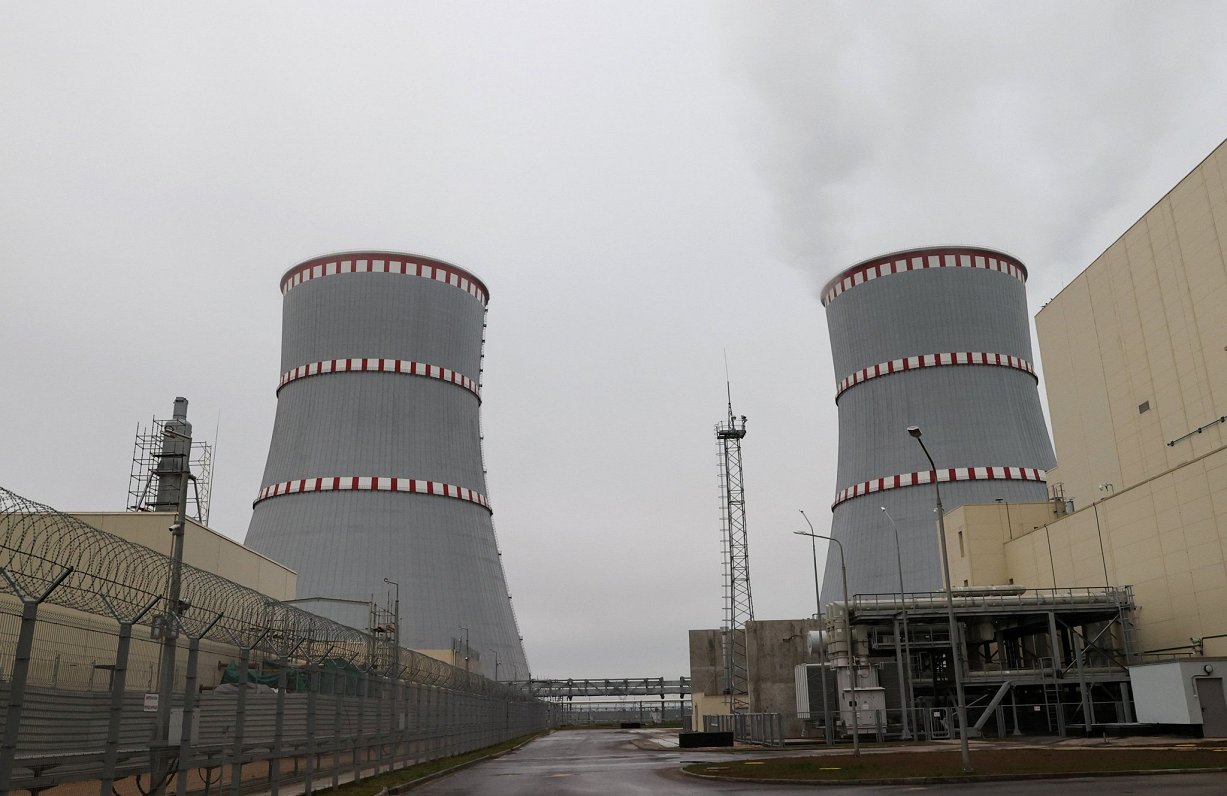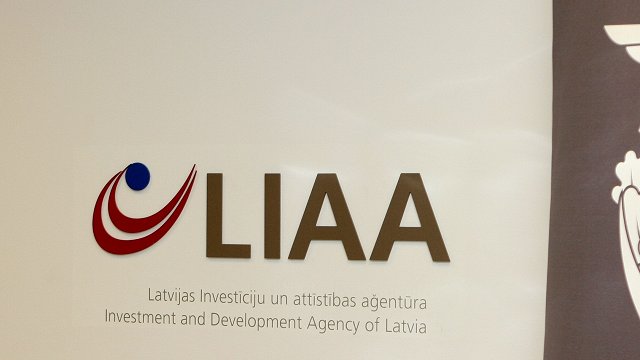In addition to being a physical safety hazard, Belarus' new nuclear plant presents geopolitical implications to the Baltic states as they seek to unplug from a Moscow-controlled electricity grid.
Estonia, Latvia, and Lithuania are due to disconnect from the BRELL grid, which also includes Belarus, to link up with the European system. However, the Baltic electricity market could be flooded with cheap electricity produced at the Astravyets NPP to disrupt the European synchronisation process.
.
“For a long time, we have been moving towards energy independence, connecting with Europe, and planning synchronisation,” said Lithuania’s outgoing Vice Foreign Minister Albinas Zananavičius.
“But if one day our market is flooded with Russian and Belarusian electricity, we will again become dependent on the east [Russia and Belarus], and our disconnection [...] will be much more complicated,” he added.
Earlier this year, Estonia, Latvia, and Lithuania reached a political agreement to boycott Belarusian electricity on their path to European synchronisation. However, different institutions and ministries in Lithuania have now argued against the deal, with the country’s energy regulator refusing to back it.
The subsequent feuding among Lithuanian officials may complicate the process further.
“If we consider [the Astravyets NPP] to be our national concern, we need to have a common position in all parliamentary parties and institutions,” said political analyst Ramūnas Vilpišauskas.
Meanwhile, Latvia should not be blamed for upping energy trade with Russia, according to Vilpišauskas.
“Lithuania cannot expect to complete the synchronisation without the other Baltic states and Poland. We are often absorbed by internal political fights and forget that only together can we achieve what is vital for us,” he added.
The question of Russia’s involvement in the energy sector will not have a single solution, as the Kremlin has interests in all three Baltic states, energy expert Romas Švedas said.
“It is often said that Lithuanians demonise and exaggerate the Kremlin problem. But I would like to remind you that the Kremlin has started a new nuclear power plant project in Kaliningrad in parallel with the Belarusian NPP project,” Švedas said.
“The Kremlin has achieved its goal. As soon as Lithuania suspended its own new nuclear power plant project” – a plan for a new plant in Visaginas that was rejected in a 2012 referendum – “the project in Kaliningrad also stopped”, according to Švedas.
“The Kremlin will continue to operate purposefully in the Baltic states’ territory. Now, its target is the [electricity grid] synchronisation. Together with the other Baltic states, we need to solve this problem,” he added.
Currently, Lithuania is also one of the largest energy importers in the region.
“We will continue to import from all sides, so if we solve one issue, there will be another. But it is important not to disrupt the synchronisation process. The Baltic states and Lithuania must not succumb to the Kremlin’s tactics. We must not be divided,” said Švedas.
Nuclear threat
According to Vice Foreign Minister Zananavičius, the greatest threat that the Astravyets NPP is posing to Lithuania has to do with its proximity to the country's capital.
“After the Fukushima disaster, no country in the world has built nuclear facilities so close to big cities. This is our main concern,” Zananavičius said.
The Belarusian nuclear plant is located some 50 kilometres from Vilnius, and Minsk cannot be trusted to warn Lithuania in case of an accident, he added.
“We cannot trust Belarus. We learned about all the incidents that took place there from other public and non-public sources, but not from the Belarusian government,” Zananavičius said.
“After the Fukushima disaster, no country in the world has built nuclear facilities so close to big cities."
He added that the Lithuanian Foreign Ministry considered the Astravyets NPP to be not only a physical safety hazard, but also a hybrid threat.
There already are large amounts of disinformation surrounding the nuclear facility, which has the potential to destabilise the society in Lithuania, according to Zananavičius.
However, the theoretical probability of a serious nuclear accident at the Astravyets NPP is very low, said Michail Demčenko, head of Lithuania’s State Nuclear Power Safety Inspectorate (VATESI).
“We are talking only about a theoretical probability,” Demčenko added. “A lot depends on the actual equipment, its quality, installation, operations.”
In 2017, Lithuania evaluated the safety of the Astravyets NPP. The assessment concluded that the construction of the nuclear facility posed a threat to Lithuania’s national security, environment, and public health due to its geographical location and technological issues. The conclusions remain relevant to this day, Demčenko said.
Atomstroyexport, the constructor of the Astravyets NPP owned by Russia’s state nuclear corporation Rosatom, said that its VVER-type reactors were among the safest in the world and had been sold in European countries, such as Finland and Hungary.
Head of VATESI noted, however, that the technology of Finnish and Hungarian reactors differed from the one used in Belarus.
“The Finnish reactor is of a much higher quality. [...] But even in that higher-quality reactor, the Finnish regulator has found many issues and has not yet approved it. The construction of the power plant has not yet started,” MP Dainius Kreivys added.
According to him, the Hungarian reactor is of lower quality than the Finnish one, but much more reliable than the Belarusian reactor. Kreivys also noted that VATESI prepared a list of 29 defects at the Astravyets nuclear reactor.
Lithuania submitted the list to the European Nuclear Safety Regulators Group (ENSREG) that carried out stress tests in the Belarusian facility. The institution’s recommendations have not been implemented.
Lack of information
In November, just days after the plant was declared to be in operation, reports surfaced about an explosion of a transformer which halted electricity production at the Astravyets NPP.
“These transformers were not part of the safety system. So the explosion did not lead to any serious consequences, such as release of radioactive materials,” the head of VATESI said.
“The bad thing is that we only found out about the incident three days after it happened. The worldwide practice is that the operator must immediately inform the public about all incidents,” he added.
According to Demčenko, however, the agreement between the two countries obliged Belarus to inform Lithuania only about nuclear incidents and not about other types of failures.
But Lithuania cannot expect to receive timely information from Belarus even when the incident is more serious, so the country must have its own warning system, according to Albinas Mastauskas, a former head of the Radiation Safety Centre.
“I want to reassure everyone that we have been preparing [for a possible nuclear incident] for many years, so we know what we need to do,” Mastauskas said.
According to him, however, the question of who would be in charge of managing the situation in case of an incident has not been resolved yet.
Lithuania’s outgoing energy minister, Žygimantas Vaičiūnas, assured that a plan for how to respond in the event of a nuclear disaster has been prepared and responsibilities have been assigned to state institutions.
He added, however, that preparations were an ongoing process and exercises must take place regularly.
But recently, another incident was reported at the Astravyets plant on November 30.
Much like before, the Belarusian authorities at first denied the incident had taken place and only backtracked after a non-governmental organisation, followed by international media, reported about the damaged emergency cooling system.
Read more: Lithuania's feud with Baltic states over energy trade – explainer




























